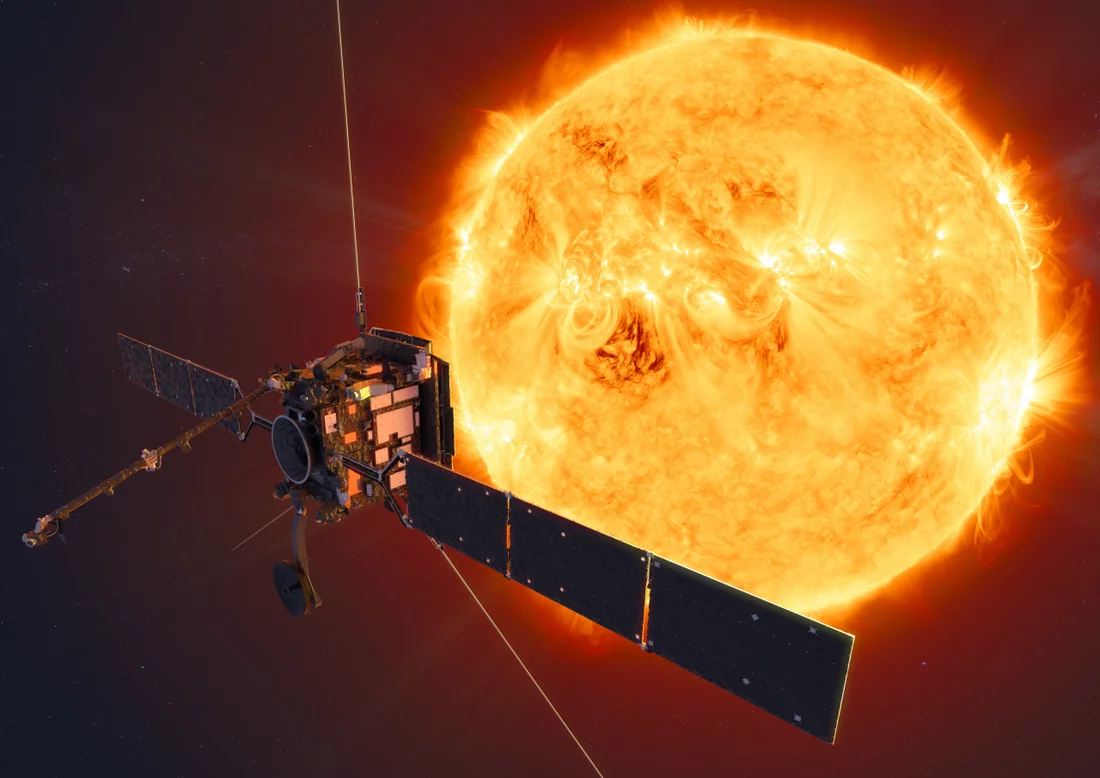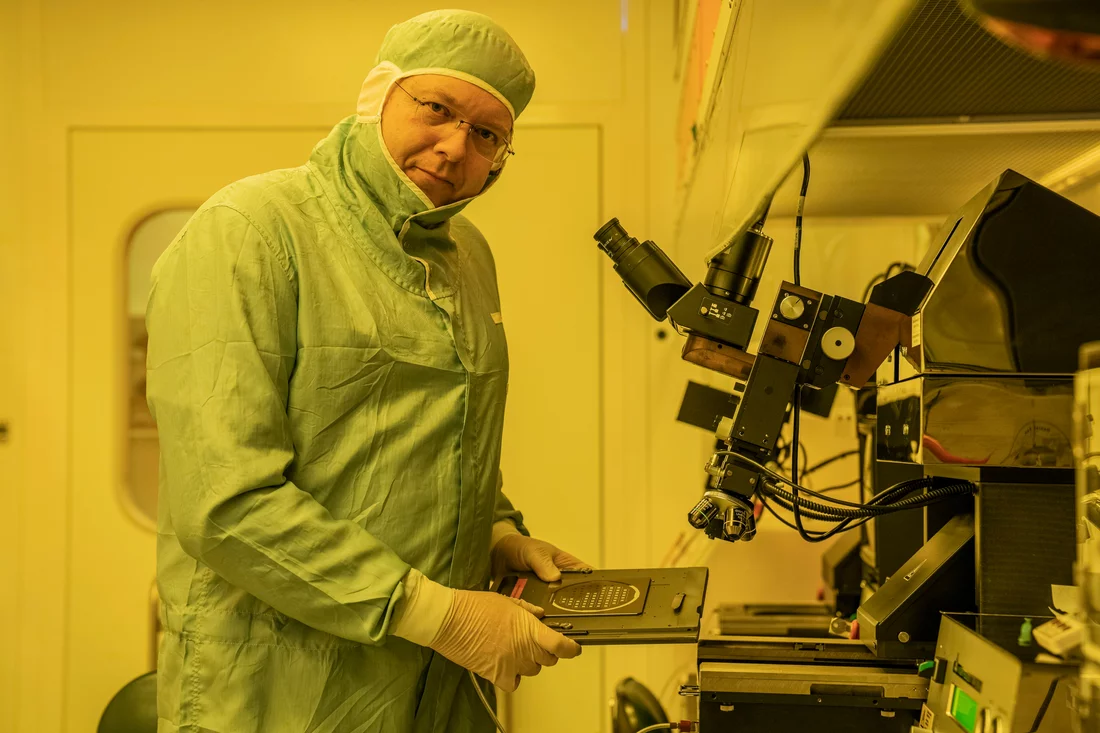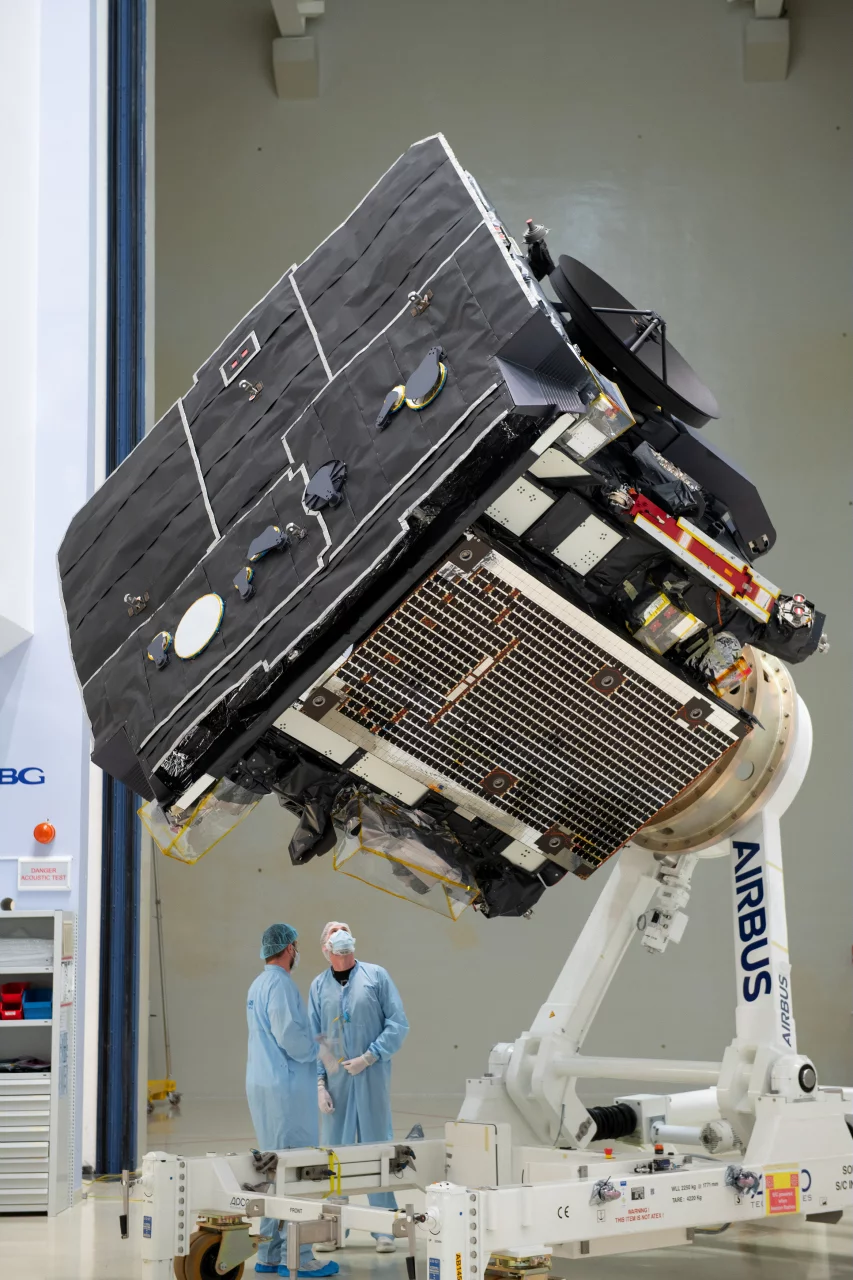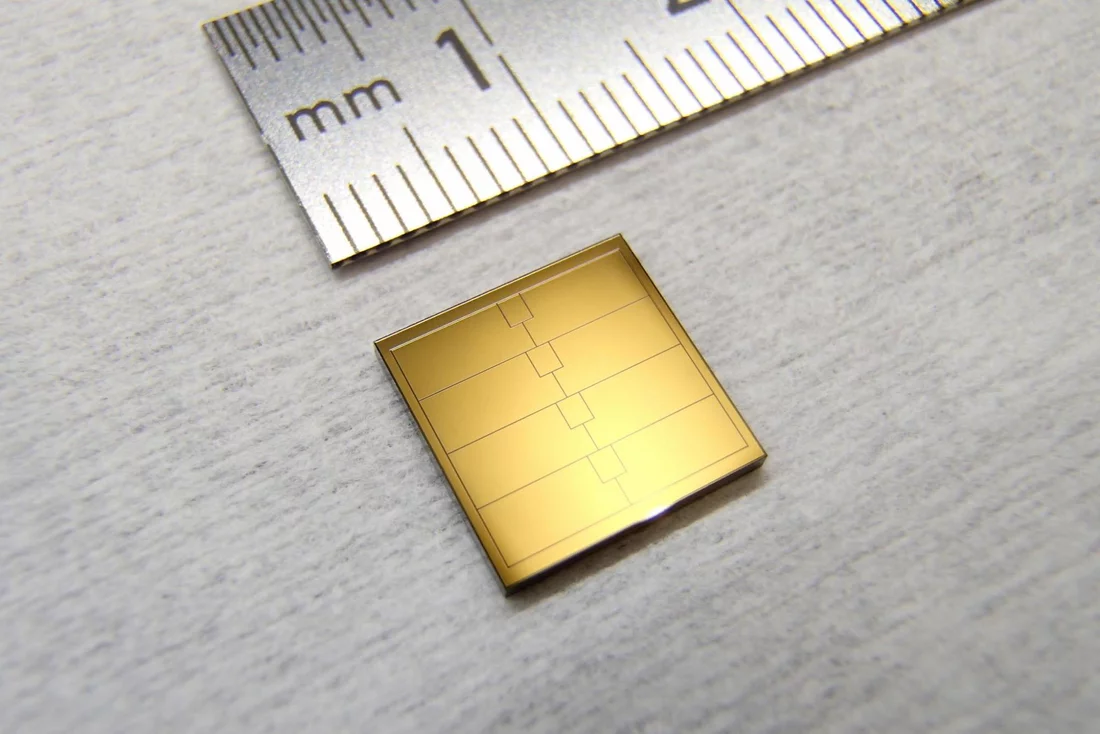After more than ten years of preparation, ESA's Solar Orbiter mission is scheduled to start on February 10th. On board the space probe is the Swiss X-ray telescope STIX – developed at the University of Applied Sciences and Arts Northwestern Switzerland FHNW. The pixel detectors needed to measure the X-ray energy were provided by staff members of the Paul Scherrer Institute PSI.
The space probe Solar Orbiter is scheduled to start its journey to the Sun on 10 February, 2020, with an Atlas V rocket launch from Cape Canaveral.
The probe is expected to approach to within 45 million kilometres of the sun – that's about a quarter of the distance between Earth and the central star. The latter's hitherto unknown polar regions will also be investigated for the first time. A mission of the European Space Agency ESA, Solar Orbiter also enjoys strong participation from the US space agency NASA.
Gaining a better understanding of the sun
The objective of the seven-year mission is to investigate the causes of "solar wind", a stream of charged particles constantly emanating from the sun and saturating the entire solar system. Among other things, these are responsible for the northern lights phenomena. The measurements taken by the ten instruments on board the spacecraft will attempt to shed light on the mystery of the solar wind.
STIX to observe solar flares
One of the instruments aboard the Solar Orbiter is the STIX X-ray telescope. "We'll be taking images and spectra of X-rays from the sun," said Säm Krucker, lead scientist on the STIX project and professor for solar physics at the FHNW University of Applied Sciences and Arts Northwestern Switzerland. This data contains information about physical states and processes that occur during solar flares, which is when vast amounts of matter and charged particles are flung explosively into space. At those junctures, the solar wind becomes a solar storm, which on Earth is made manifest by vivid polar lights and can cause interference with satellites, aircraft and power grids.
The causes of solar flares are related to the coronal heating problem, one of solar physics' unsolved questions. The temperature of the sun's corona is about one million centigrade hot, while its surface is "only" 6000 centigrade.
The FHNW School of Engineering under the direction of Säm Krucker is responsible for STIX's development, construction, operation and scientific evaluation. The astrophysicist came up with the idea for an X-ray telescope 18 years ago. The last 10 years have seen him and his team at the FHNW prepare STIX's hardware and software. ESA and the Swiss Space Office, part of the State Secretariat for Education, Research and Innovation SERI, financed the project.
Pixel detectors "made by hand" at PSI
In the STIX telescope, ten-by-ten-millimetre pixel detectors measure the energy and time of the incident X-rays during a solar flare. The detectors were developed at PSI by a team led by clean room manager Martin Bednarzik on behalf of FHNW. In general, when X-rays hit a detector, they generate a small electrical signal that can be recorded by sensitive readout electronics. Such detectors are often made from the semiconductor material silicon. For the upcoming mission, though, silicon-based X-ray detectors are unsuitable. "This is because the telescope should be able to measure a very wide spectrum of energy," says Martin Bednarzik. "That wouldn't work with silicon, which is normally used for such components, since its absorption characteristics at higher energies wouldn't yield the desired capability."
Instead, another semiconductor, cadmium telluride, proved to be the material of choice. In a six-year effort, the PSI researchers built and tested around 500 cadmium telluride sensors in the clean room – and first needed to develop and optimise the fabrication processes. "Each individual pixel detector is hand-crafted," says Bednarzik. The best 32 pieces were bonded to the readout electronics at the CEA research centre in Paris, and now they will fly into space with the STIX telescope built into the Solar Orbiter.
Two years to the first measurements
One of the challenges facing the space probe and its instruments are the enormous temperature differences: the side of Solar Orbiter facing the sun will be coping with temperatures in excess of 500 centigrade, while the opposite side will be as cold as -100 centigrade. A solid titanium heat shield featuring a specially developed black protective layer will be shielding the instruments from the sun – one of the reasons for the satellite's launch weight of 1.8 tonnes.
The launch at Cape Canaveral, Florida, will be followed by a flight of almost two years to enter the sun's orbit, preceded by "gravitational sling-shot" manoeuvres involving Earth and Venus. The probe is expected to begin its measurements in November 2021 and continue its mission until at least December 2025. The researchers are hoping for close synergies with NASA's Solar Parker Probe mission, which launched in August 2018. Solar Orbiter's mission budget stands at around EUR 1.5 billion.
STIX: who is involved?
The STIX X-ray telescope has been developed and built under the leadership of the FHNW University of Applied Sciences and Arts Northwestern Switzerland by Swiss companies and research institutions in cooperation with partners from Poland, France, the Czech Republic, Germany, Austria, Ireland and Italy.
Swiss partners involved:
- Almatech SA, Lausanne
- Art of Technology AG, Zurich
- Syderal Swiss SA, Gals
- Maxon Motor AG, Sachseln
- SWSTech AG, Frauenfeld
- Createch AG, Langenthal
- CNC Dynamix AG, Büron
- Ernst Hänni AG, Volketswil
- Heinz Baumgartner AG, Urdorf
- Hasler AG, Vogelsang
- Niklaus SA, Meyrin
- REMOTEC GmbH, Wädenswil
- Ateleris GmbH, Brugg AG
- KOEGL Space, Dielsdorf
Swiss research institutions involved:
- FHNW School of Engineering
- Paul Scherrer Institute PSI
- University of Bern
Switzerland is involved in two further instruments on the Solar Orbiter under the leadership of Louise Harra, Director PMOD/WRC Davos: EUI (Extreme Ultraviolet Image) and SPICE (Spectral Imaging of the Coronal Environment).
Text: Based on a media release from the University of Applied Sciences and Arts Northwestern Switzerland FHNW with additions from the Paul Scherrer Institute/Brigitte Osterath
Contact
Martin Bednarzik
Radiation Safety and Security, formerly at the Laboratory for Micro- and Nanotechnology
Paul Scherrer Institute, Forschungsstrasse 111, 5232 Villigen PSI, Switzerland
Telephone: +41 56 310 25 20, e-mail: martin.bednarzik@psi.ch [German, English]
FHNW University of Applied Sciences and Arts Northwestern Switzerland
FHNW School of Engineering
Sandro Nydegger, Media Relations
Telephone: +41 56 202 84 13, e-mail: sandro.nydegger@fhnw.ch
www.fhnw.ch/technik




